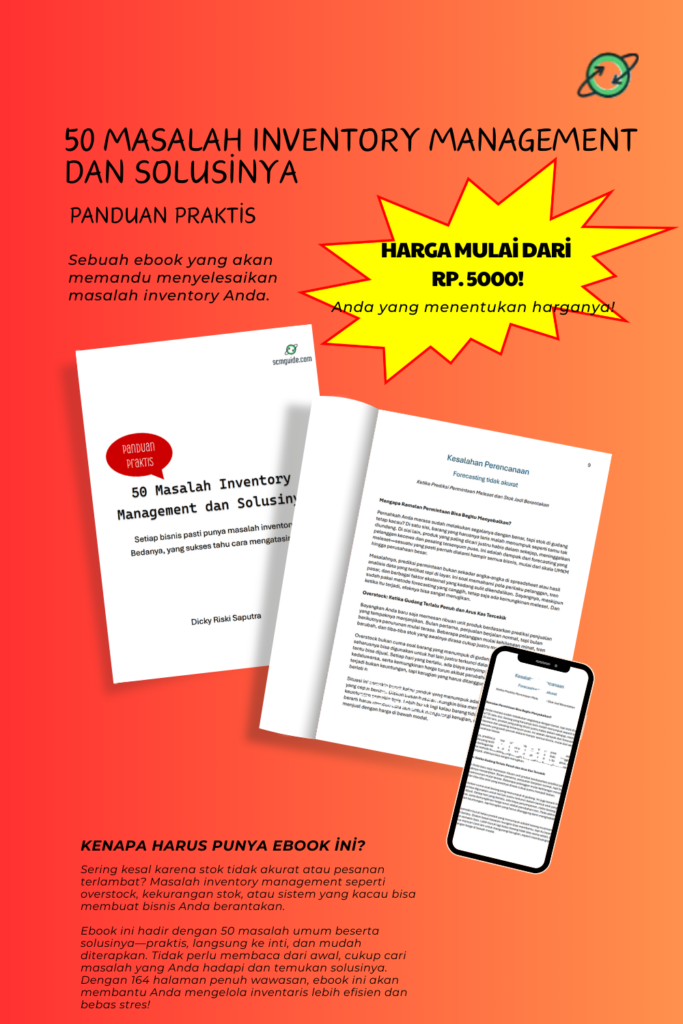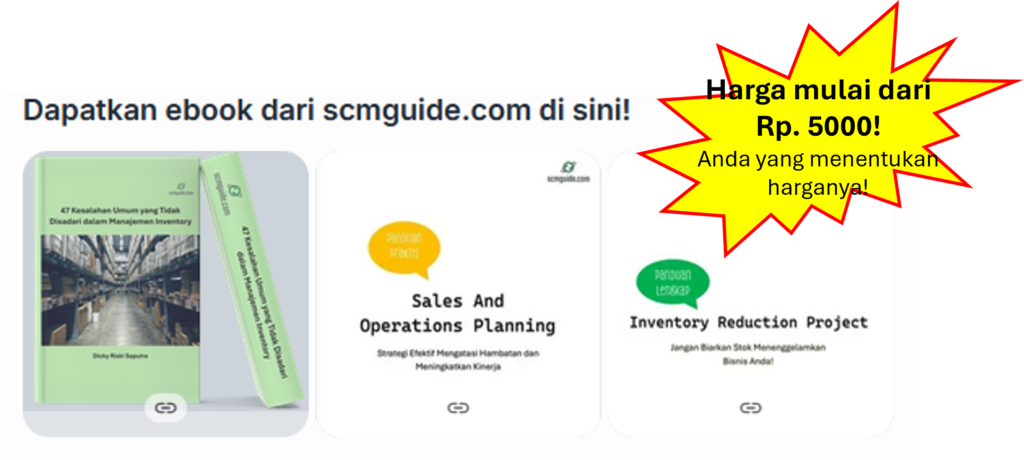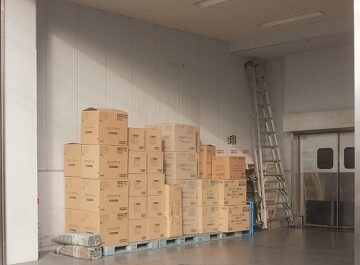In manufacturing, getting materials to your production line on time is super important. Late deliveries can mess up your whole schedule, cost you more money, and make your customers unhappy. To keep things running smoothly and keep your business top-notch, you need smart ways to manage your supply chain.
In this blog post, we’ll look at ten essential strategies to make sure your suppliers always deliver what you need when you need it.
Before we go further into this topic, don’t forget to follow my LinkedIn account. You’ll get more helpful insights on supply chain management there.
Table of Contents
Establish Clear Expectations
Clear communication is super important for good relationships with suppliers in manufacturing. When you clearly explain what you need, like when materials should arrive or what quality they should be, it sets a strong foundation for working together.
This makes sure everyone understands their roles and avoids confusion. Whether it’s setting deadlines for deliveries or specifying quality standards, clear communication gets things off to a good start.
It’s also helpful to put everything in writing. Contracts or agreements are like official papers that outline what you and the supplier agree on.
By writing down details like delivery schedules and quality standards, both parties have something to refer back to if there are any questions or disagreements later on. This written record makes sure everyone stays on the same page and knows what they’re responsible for.
In the end, clear communication and written agreements build trust and make partnerships stronger. When both sides understand each other and have clear rules to follow, it creates a positive environment for collaboration.
This teamwork leads to better efficiency, fewer problems, and more success in meeting the needs of customers.
Regular Communication
Keeping in touch with suppliers is super important for smooth teamwork and sorting out problems quickly.

By scheduling regular catch-ups, like meetings, calls, or emails, you can stay updated on how things are going, talk about any issues, and share updates on production plans or changes you need. This proactive communication helps keep everyone on the same page, reducing the chance of mix-ups or delays.
Regular check-ins also help fix problems early on. If there’s a delay in getting materials, a change in what you need, or worries about quality, talking openly with suppliers lets you find solutions together.
Solving problems as they come up stops them from getting worse and keeps production running smoothly.
Plus, when you’re proactive about communication, it shows you care about the partnership. Suppliers feel appreciated and are more likely to go the extra mile to meet your needs.
This teamwork not only strengthens your relationship but also makes the whole supply chain work better, leading to happier customers and smoother operations.
Supplier Performance Metrics
Setting up key performance indicators (KPIs) is super important for measuring how well suppliers are doing and making sure they’re on track with what your company needs.
When you pick KPIs like delivery times, accuracy of lead times, and material quality, you create clear goals for suppliers to meet. These metrics give you solid numbers to see if suppliers are delivering on time, being efficient, and giving you good-quality stuff.
Tracking these metrics lets you keep an eye on supplier performance regularly and spot any areas that need improvement. By looking at trends and patterns in the data, you can see how suppliers are doing over time and if they’re meeting the standards you’ve set.
This helps you make smart decisions about your relationships with suppliers, like figuring out which ones are doing great or if there are any problems that need fixing.
Plus, using KPIs to evaluate supplier performance helps you give them feedback and keep getting better together. Sharing KPI data and talking with suppliers about what’s going well and what could be improved creates a positive cycle of learning and growth.
This teamwork helps suppliers make changes, improve their processes, and make sure they’re meeting your company’s needs. Ultimately, using KPIs helps you make sure suppliers are doing their best, keep your supply chain running smoothly, and make your business more efficient overall.
You might also like:
- 5 Tips for Overcoming the Challenges of Assessing Quality as a Procurement Officer
- 10 Ways Supply Chain Management Can Contribute to Business Profits
Supplier Evaluation and Selection
Picking the right suppliers is super important for building strong partnerships in your supply chain. By checking out things like reliability, past performance, financial health, and ability to handle demand, you can lower risks and make sure your suppliers fit your needs.
Reliability means looking at how often a supplier delivers materials on time and meets quality standards. Checking out their track record and references gives you a good idea of what to expect.

Financial stability is also a big deal when choosing suppliers. You want to make sure they can handle ups and downs in the economy and keep providing good service. Checking things like financial statements and credit ratings helps you see if they’re in good shape for the long haul.
Plus, you need suppliers who can keep up with your demand, especially if it changes a lot. Looking at their production capacity and ability to handle busy times helps you know if they can meet your needs when things get busy.
In the end, picking suppliers who are committed to meeting your needs is key for long-term success. Beyond just being cheap or making good products, you want suppliers who share your values and are dedicated to doing great work.
By having open communication, clear expectations, and trust, you can build strong relationships with suppliers that help your business grow and thrive over time.
Collaborative Planning
Working closely with suppliers on forecasting and production planning is super important for making sure your supply chain runs smoothly. By sharing your predictions and production schedules with suppliers, you give them a heads-up on what you need and when.
This helps suppliers plan their own production and inventory levels to meet your requirements on time. By teaming up to predict demand changes and plan production together, you can avoid surprises and keep operations running smoothly, which makes customers happier.
Sharing forecasts and schedules also helps everyone in the supply chain stay on the same page. When suppliers know what you’ll need in the future, they can make smart choices about buying materials, scheduling production, and using resources.
This visibility helps suppliers streamline their own processes, cut down on wait times, and make the whole supply chain work better. Plus, collaborating on planning creates a sense of teamwork and shared goals, motivating suppliers to tackle challenges and find ways to improve.

Working together on planning isn’t just good for suppliers—it benefits the whole supply chain. By teaming up to predict and respond to market demand, suppliers and manufacturers can cut down on wasted inventory, reduce costs, and use resources more efficiently.
This teamwork also makes the supply chain more flexible and able to adapt quickly to changes in the market or what customers want. Ultimately, by collaborating closely with suppliers on forecasting and planning, your organization can become more resilient, efficient, and competitive in today’s fast-paced business world.
Inventory Management
Keeping just the right amount of inventory is super important for keeping production running smoothly and avoiding problems from supplier delays. By managing inventory carefully, companies can prepare for uncertainties in the supply chain and make sure they don’t run out of materials or have too much sitting around.
Techniques like just-in-time (JIT) inventory help keep inventory levels low while making sure materials are always available when needed. With JIT, materials arrive just in time for production, cutting down on storage costs and other expenses.
Having effective inventory management helps balance the amount of stuff you have with what you actually need. By keeping a close eye on inventory levels and demand, companies can buy materials at the right time and avoid having too much or too little.
This saves money on storage and reduces the risk of having materials go to waste. Plus, when inventory matches demand, companies can respond faster to changes in the market and what customers want, which keeps them happy and coming back.
Good inventory management also makes companies more agile and competitive. By making inventory processes faster and cutting down on wait times, companies can react quickly to changes in the market and what customers need.
This helps them stay ahead of the competition, seize new opportunities, and deal with risks more easily. Ultimately, by keeping inventory levels just right and managing inventory well, companies save money, work more efficiently, and make customers happier, which leads to long-term success.
You might also like:
- The Domino Effect: Unraveling 10 Consequences of a Weak Supply Chain Team
- Top 10 Inventory Management Best Practices
Supplier Incentives and Penalties
Rewarding suppliers for meeting or beating delivery expectations is a great way to encourage top-notch performance in the supply chain. By giving rewards like bonuses or discounts, companies can show suppliers they appreciate when they deliver on time and with high quality.
These incentives motivate suppliers to focus on meeting targets and being reliable. Suppliers who consistently do a great job get rewarded, which makes the partnership stronger and keeps the supply chain stable.

On the flip side, having penalties for late deliveries helps make sure suppliers take their commitments seriously. Penalties like fines or changing contracts show suppliers that delivering late isn’t okay and has consequences.
This makes suppliers hustle to deliver on time to avoid getting penalized. By holding suppliers accountable, companies show they’re serious about keeping things running smoothly and reducing risks in the supply chain.
Incentives and penalties keep suppliers on their toes and make sure they prioritize delivering on time. This leads to better performance and reliability in the supply chain. When companies and suppliers are on the same page about goals and expectations, it creates a culture of improvement and helps everyone succeed.
Plus, being clear about incentives and penalties builds trust and strengthens the partnership between companies and suppliers, which leads to even better collaboration and success.
Supply Chain Visibility
Investing in technologies for supply chain visibility is super important for making operations smoother and lowering risks. With advanced tools, companies can see what’s happening across the supply chain in real-time, like how suppliers are doing, how much inventory is left, and where shipments are.
This helps track important metrics, like delivery times and accuracy, to see how well suppliers are performing objectively. Plus, knowing inventory levels helps manage stock better and avoid running out or having too much, which saves money.
Using tools to monitor supplier performance lets companies spot problems early on and fix them fast. By keeping an eye on things like delivery times and quality, companies can quickly see if suppliers aren’t doing well and take action to fix it.
Having visibility into the supply chain also helps predict and prevent delays or issues before they get worse, which makes the supply chain more reliable and resilient. Being proactive about risks means companies can make backup plans, like finding alternative suppliers or speeding up deliveries, to keep things running smoothly and keep customers happy.

Overall, having visibility into the supply chain helps companies make smarter decisions and manage risks better. By investing in technologies that give real-time insights into supplier performance and inventory levels, companies can work more efficiently and stay competitive.
Plus, being able to see what’s going on fosters better teamwork and coordination between supply chain partners, which leads to even better results. Ultimately, having supply chain visibility helps companies adapt faster to changes in the market, handle risks better, and provide better value to customers.
Alternative Suppliers
Building relationships with backup suppliers is a smart way to lower risks and make the supply chain stronger. By having more than one supplier, companies aren’t as dependent on just one source.
This means if there are problems with the main supplier, like a natural disaster or financial issues, there’s a backup plan in place to keep things running smoothly. Having alternative suppliers ensures that the company can keep getting what it needs, no matter what challenges come up.
Having backup suppliers also makes the supply chain more competitive and helps suppliers do better. When primary suppliers know there are alternatives, they work harder to stay on top by delivering on time, keeping quality high, and offering good prices.
This competition pushes suppliers to improve their processes and services, which benefits the company. With better supplier performance, the company has more flexibility and can negotiate better deals, which means more value for the business and its customers.
Plus, having backup options opens up new possibilities and keeps the company ready for whatever comes its way. By working with different suppliers, companies can explore new markets, get specialized expertise, and use innovative technologies.
This helps them stay quick and adaptable to changes in what customers want and in the market. By building relationships with backup suppliers early on, companies make the supply chain stronger, lower risks, and set themselves up for long-term success, even in uncertain times.
Continuous Improvement
Creating a culture of always getting better in the supply chain is super important for making things run smoother, saving money, and staying ahead of the competition. By always looking for ways to do things better, companies make sure they’re using the best methods and saving time and money.
This means checking out every step of the supply chain, like buying materials, making products, and getting them to customers, to find places where things could be done more efficiently.

Getting feedback from suppliers and people inside the company is key to finding areas to improve. Suppliers know a lot about their own processes and can share ideas for working together better.
By talking openly with suppliers, companies can build stronger partnerships, find ways to save money, and make things work better for everyone. Getting input from people in different parts of the company is also important for spotting problems and finding ways to make processes smoother.
To keep getting better, companies need to keep learning and trying new things. This means collecting and analyzing data, watching important metrics, and seeing how changes affect business goals.
By using data and listening to what’s happening in the company, companies can figure out what’s working and what’s not and make changes to keep improving. Making sure everyone in the company is on board with always getting better, from the top down, helps drive innovation, stay flexible, and keep growing in today’s fast-paced business world.
Conclusion
By using these ten strategies, you can make sure your supply chain runs smoothly and your suppliers deliver materials to your plant on time.
Keeping communication open, monitoring performance, planning together, and always looking for ways to get better are the main things that help.
By focusing on these ideas, you can make your manufacturing operations work better, avoid problems, and be really good at what you do.
I hope you find it helpful!
Please share this article with your colleagues so they can also benefit. For more insights on supply chain management, follow my LinkedIn account. You’re free to use all articles on this blog for any purpose, even for commercial use, without needing to give credit.

 by
by 



